
FEM Adaptive Order is a next generation finite element acoustics solver in Simcenter 3D that greatly speeds up solution of vibro-acoustic phenomena. Image courtesy of Siemens.
Latest News
October 25, 2017
Siemens announces the latest version of Simcenter 3D, its flagship environment for multidisciplinary computer-aided engineering (CAE), with new comprehensive solutions across multiple simulation disciplines. Simcenter 3D is an advanced stand-alone CAE application for analysts and discipline experts that works with data from any CAD source.
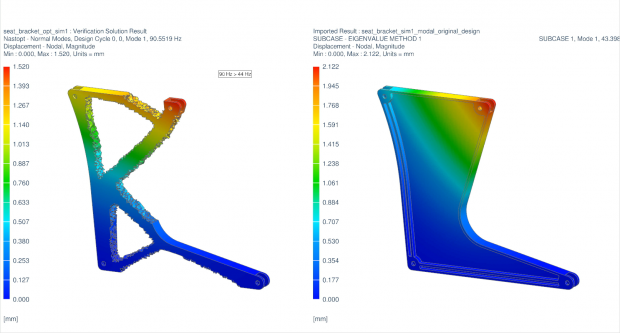 Topology optimization, powered by NX Nastran, used to reduce the weight of an airline seat structure. Image courtesy of Siemens.
Topology optimization, powered by NX Nastran, used to reduce the weight of an airline seat structure. Image courtesy of Siemens.Because it is built on the Siemens NX platform, it also works with NX CAD. With more enhancements than previous releases, Simcenter 3D, part of Siemens’s Simcenter portfolio of simulation and test solutions for predictive engineering analytics, aims to impact how simulation engineers can help drive design in industries such as automotive, aerospace and industrial machinery, the company reports.
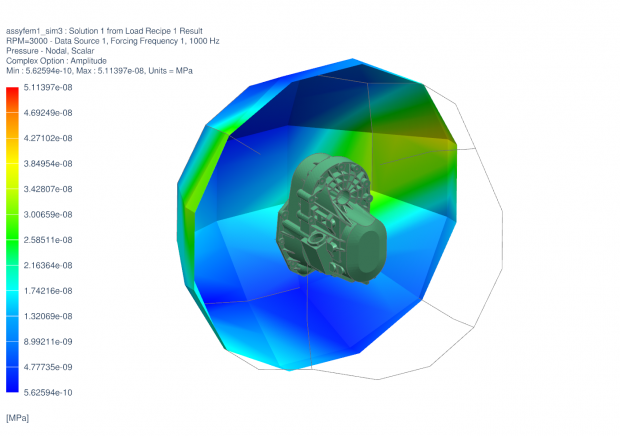 The acoustic transfer vector approach in Simcenter 3D enables efficient analysis of large models for multiple frequencies or rotational speeds. Image courtesy of Siemens.
The acoustic transfer vector approach in Simcenter 3D enables efficient analysis of large models for multiple frequencies or rotational speeds. Image courtesy of Siemens.This latest release provides topology optimization solutions that work with Convergent Modeling technology to provide generative design workflows. These solutions allow for motion modeling and acoustic and structural dynamics simulations.
 FEM Adaptive Order is a next generation finite element acoustics solver in Simcenter 3D that greatly speeds up solution of vibro-acoustic phenomena. Image courtesy of Siemens.
FEM Adaptive Order is a next generation finite element acoustics solver in Simcenter 3D that greatly speeds up solution of vibro-acoustic phenomena. Image courtesy of Siemens.Simcenter 3D now provides expanded support for general purpose nonlinear solutions based on the NX Nastran multi-step nonlinear solver as well as advanced analysis of composites based on LMS Samtech Samcef software. This latest release also delivers several enhancements to improve industry workflows across a wide range of industries, for modeling connections in large assemblies as well as accurate simulation of flexible pipes and hoses, the company reports.
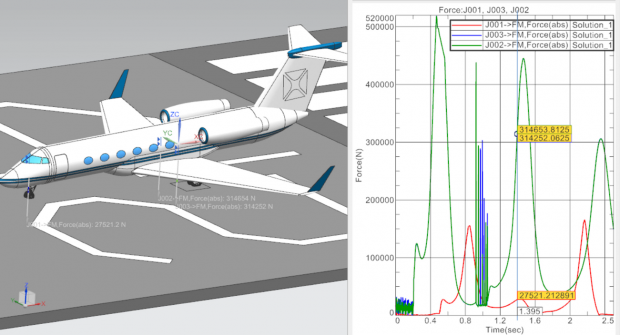
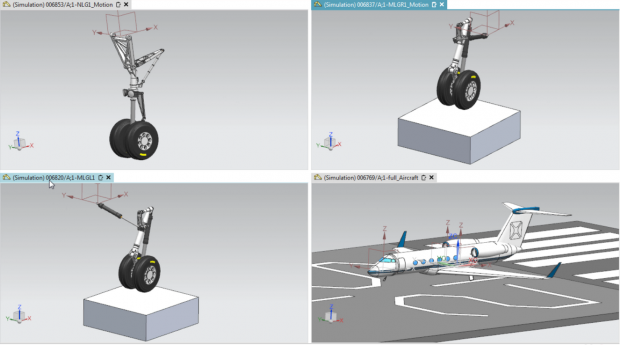 Simcenter 3D allows efficient assembly of large motion models through management and re-use modular mechanisms. Images courtesy of Siemens.
Simcenter 3D allows efficient assembly of large motion models through management and re-use modular mechanisms. Images courtesy of Siemens.Working with NX CAD and Convergent Modeling technology, Simcenter 3D now offers generative design solutions for designers and advanced analysts. Output from a topology optimization process can be used directly in the design process, without the need to recreate geometry.
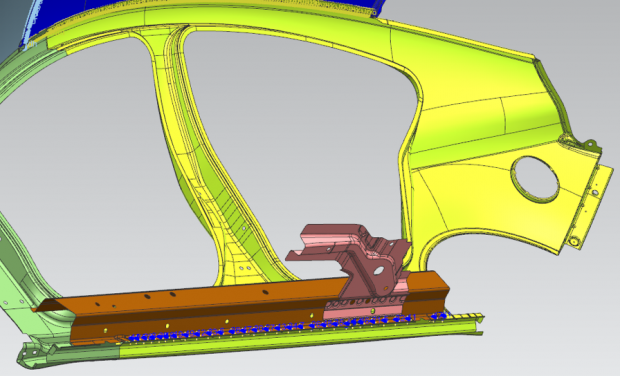 Simcenter 3D streamlines the creation of large assemblies such as automotive body models through automated creation of proximity based connections. Image courtesy of Siemens.
Simcenter 3D streamlines the creation of large assemblies such as automotive body models through automated creation of proximity based connections. Image courtesy of Siemens.Furthermore, engineers can now work directly with scanned data or an optimized shape to conduct more detailed simulations. By using Simcenter 3D along with HEEDS software for design exploration automation, engineers are able to fully explore the design space and generate designs that meet more stringent design requirements.
 Nonlinear drop test simulation for an electronics device performed using NX Nastran. Image courtesy of Siemens.
Nonlinear drop test simulation for an electronics device performed using NX Nastran. Image courtesy of Siemens.New with this release, hybrid modeling allows analysts to incorporate test-based data into their simulation models to achieve better accuracy within the simulation. Other enhancements include support for modeling submechanisms within motion assemblies, faster computation time for analytical contact in motion models, and improved performance for interior and exterior acoustics simulation, the company reports.
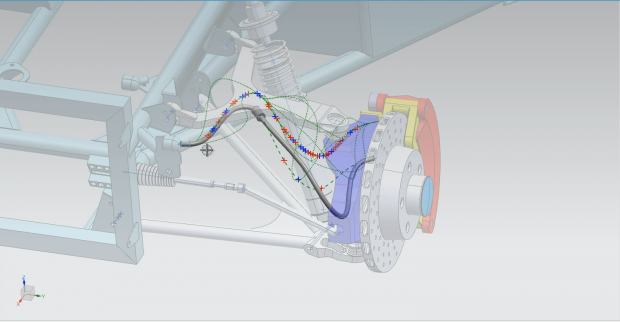
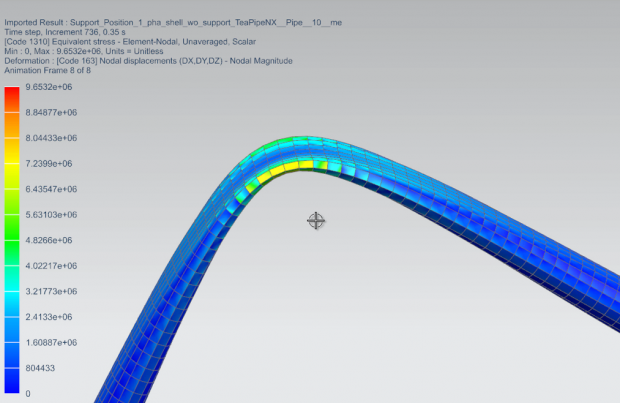 Using Simcenter 3D engineers can design and simulate the behavior of flexible pipes and hoses. Images courtesy of Siemens.
Using Simcenter 3D engineers can design and simulate the behavior of flexible pipes and hoses. Images courtesy of Siemens.Nonlinear simulation in Simcenter 3D is greatly expanded by leveraging enhancements in NX Nastran and integrating capabilities from the LMS Samcef solver. In addition to the already strong capabilities for simulating nonlinear thermo-mechanical behavior in turbomachinery, Simcenter 3D now offers expanded support for general purpose nonlinear simulation with more elements, robustness and algorithms for multistep nonlinear simulation. Additionally, support for curing simulation of composites now allows prediction of residual stresses and spring-back effects.
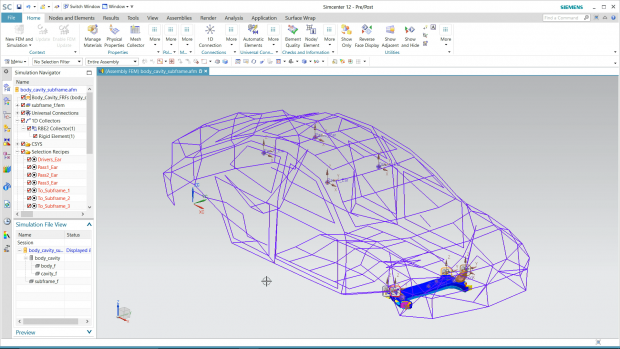 Simcenter 3D supports hybrid modeling that combines test and simulation based models for structural dynamics and NVH analysis. Image courtesy of Siemens.
Simcenter 3D supports hybrid modeling that combines test and simulation based models for structural dynamics and NVH analysis. Image courtesy of Siemens.Several of the enhancements target industry-specific workflows. Simulation engineers in automotive, aerospace, and heavy machinery companies benefit from the integration of universal connections support, which can help to efficiently build large system models with many connections and solve across several solvers. Simcenter 3D also leverages the LMS Samcef solver for simulation of flexible pipes and hoses.
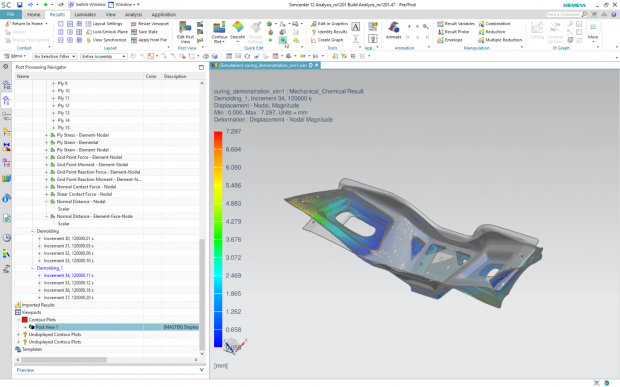 Composites simulation with Simcenter 3D have been extended to include simulation of curing and spring back effects to enable manufacturability assessments. Image courtesy of Siemens.
Composites simulation with Simcenter 3D have been extended to include simulation of curing and spring back effects to enable manufacturability assessments. Image courtesy of Siemens.“With our latest release of Simcenter 3D we are able to integrate multiple technologies from different tools all under one platform. Capitalizing on our deep experience in geometry-based CAE as well as our strength in key disciplines such as structural dynamics, acoustics, motion, and nonlinear analysis, we have enhanced Simcenter 3D to enable more streamlined workflows and a broader set of simulations in support of performance engineering,” says Jan Leuridan, senior vice president for Simulation and Test Solutions, Siemens PLM Software.
For more info, visit Siemens.
Sources: Press materials received from the company.
Subscribe to our FREE magazine, FREE email newsletters or both!
Latest News






